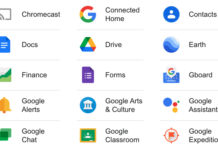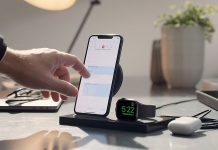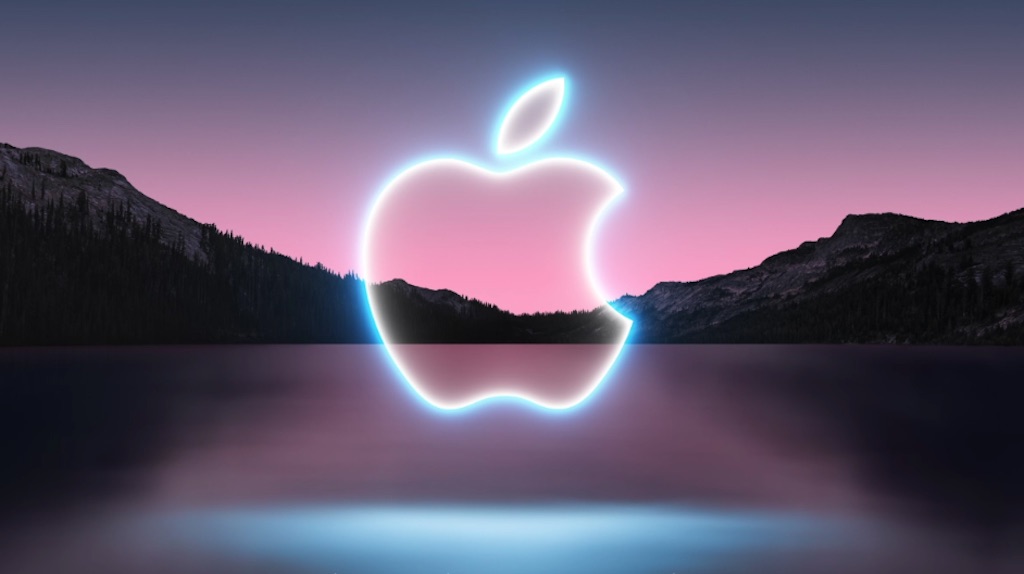
Apple unveiled a bunch of new products at its big keynote, including the new iPhone 13 models, new iPads, and another generation in the Apple Watch Series 7.
These devices put each category a step forward, though do bear many similarities to their predecessors. A big focus this time around was on addressing needs in both hardware and software to increase performance and efficiency.
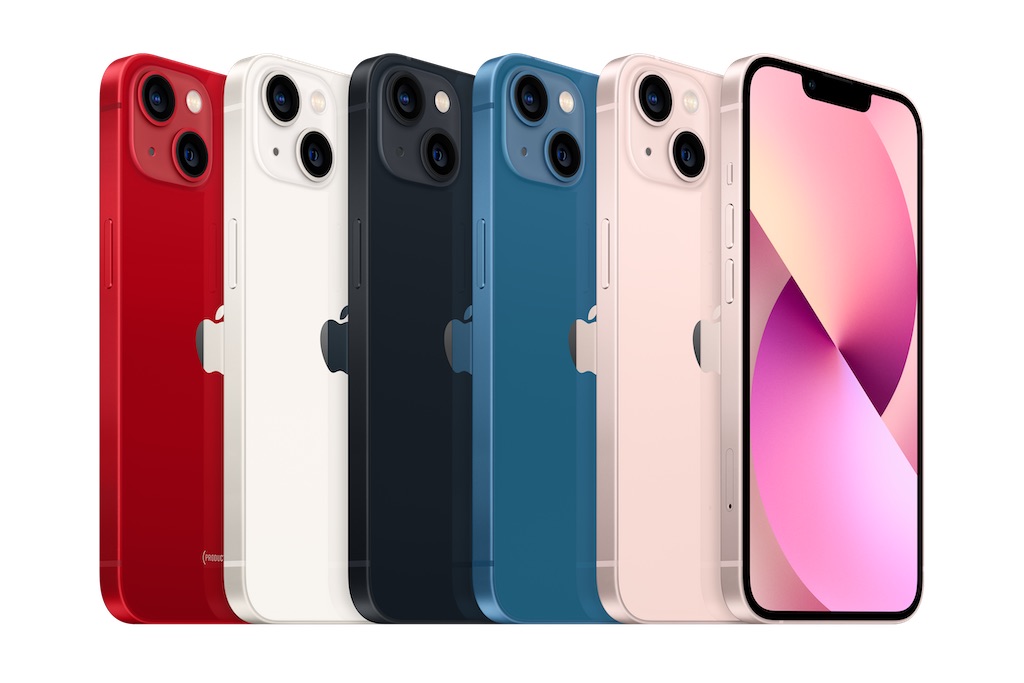
iPhone 13 and iPhone 13 mini
You may recall Apple first went the “mini” route for the iPhone last year. It’s back again, and comes in the same size. The 5.4-inch has an improved Super Retina XDR OLED with up to 28% more brightness. It’s covered by Ceramic Shield, a tougher glass Apple has begun using on its iPhones to add some additional protection. You also still get the same IP68 water resistance in case of those accidental spills.
The iPhone 13 retains its 6.1-inch screen size, though also gets the improved Super Retina XDR OLED as well. Ceramic Shield and the same water resistance also applies. Both phones will run on Apple’s new A15 Bionic processor, which the company claims will lead to better battery life, at up to 90 minutes longer per charge. Unfortunately, neither of these phones were equipped with faster 120Hz refresh rates for their screens. Only the Pro models will get that.
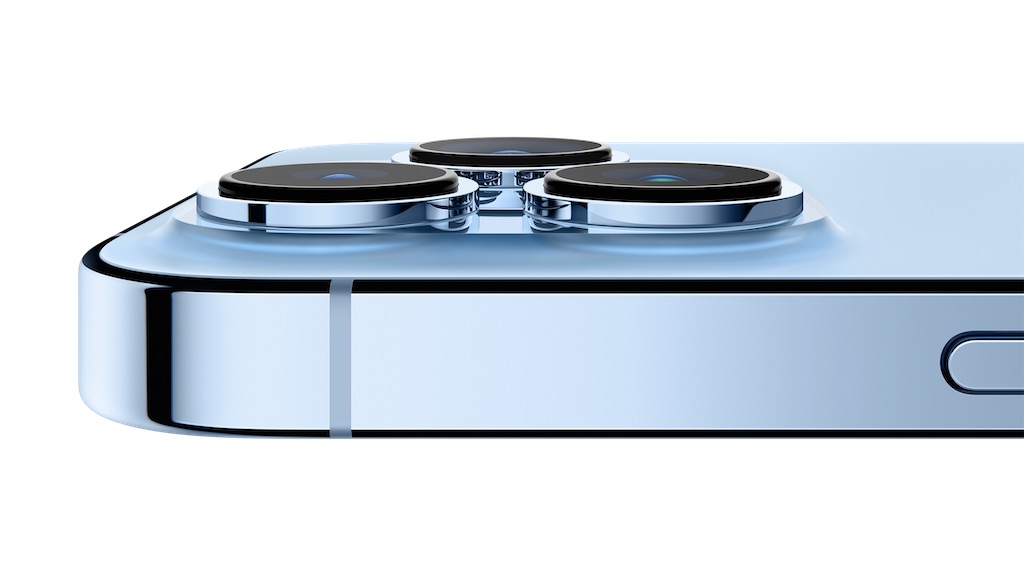
Newer cameras
The rear cameras also undergo some changes, including new sensors and lenses. Apple says the standard 12-megapixel wide camera should produce better results in low-light conditions. The Sensor-shift optical image stabilization (OIS) system first introduced in the iPhone 12 Pro Max makes its way over to these phones as well. A new 12-megapixel ultra-wide camera also comes into play, with the ability to capture more light in darker settings, too.
A new Cinematic mode for video uses what’s called “rack focus,” a cinematography term to describe how focus seamlessly changes from one subject to another. It’s a filmmaking effect that lets you adjust or change the focus even after you’ve captured video by editing in iMovie or the Photos app. Apple will soon make it available in iMovie and Final Cut Pro for macOS. This mode can record in Dolby Vision HDR with support for 4K resolution at up to 60fps.
The colour options include pink, blue, starlight, midnight and a productRED version. Storage capacity starts at 128GB, with 256GB and 512GB options also available.
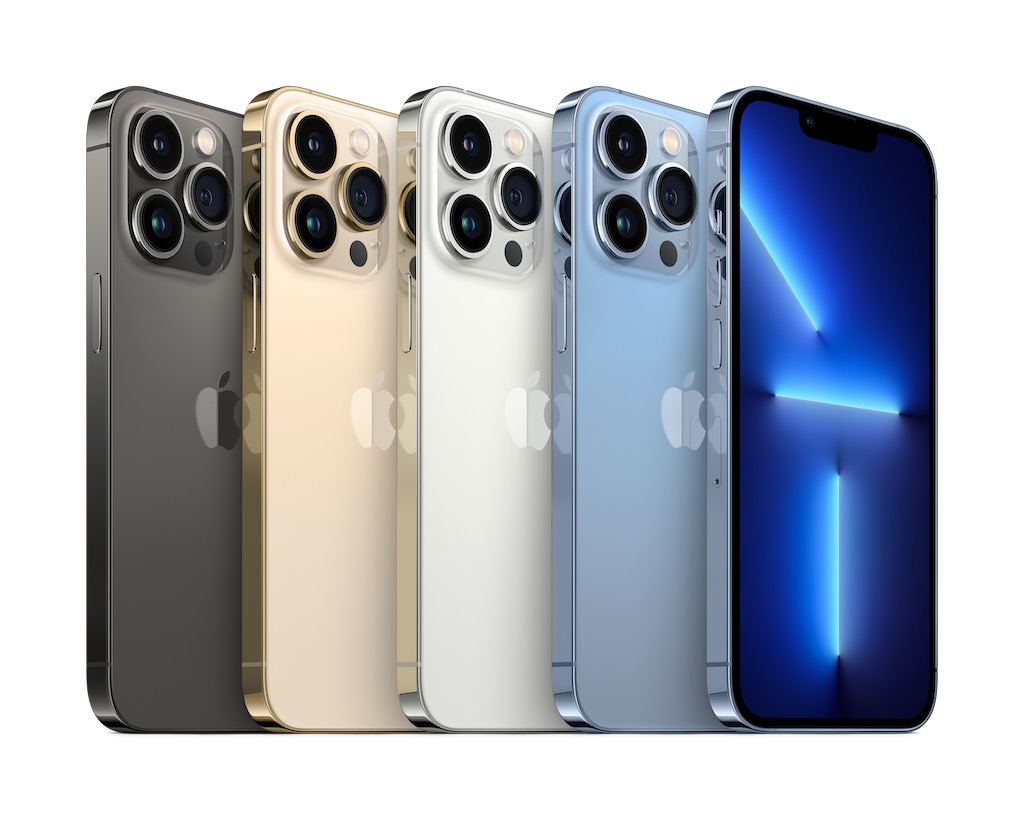
iPhone 13 Pro and iPhone 13 Pro Max
The iPhone Pro 13 models get some extras the others don’t. One is the ProMotion refresh rate that automatically adjusts between 10-120Hz based on what you’re doing on the phone. The other additions come on the camera side, but first the screens.
The iPhone 13 Pro sticks to a 6.1-inch Super Retina XDR, while the 13 Pro Max is at 6.7-inches. Both use an improved OLED panel with better brightness as well. Apple’s A15 Bionic chip will power them, and you get improved battery life because of it.
Where things diverge further is with the cameras. They each have triple camera arrays in the rear, only with better specs. The standard wide camera has a larger sensor, with an f/1.5 aperture and larger micron pixels. Apple claims these factors will lead to a huge increase in light capture when shooting at night or low-light situations. The company even says it could be double that of the previous iPhone 12 Pro models.
The new ultra-wide camera gets similar treatment. A wider aperture and a new autofocus system that is supposed to bring in more light. Apple also brought in macro photography to this lens, letting you get as close as 2cm to a subject to capture really tight close-ups. The telephoto lens has a 3x optical zoom and is also said to be better than before.
Sensor-shift OIS also apples to both Pro phones, as does Cinematic mode. ProRes 2 will also be exclusive to these two phones, building on the video codec Apple previously introduced in an attempt to offer better detail at lower file sizes. You can shoot and edit footage within the phone in both ProRes and Dolby Vision.
Colour options include graphite, gold, silver and sierra blue. Storage capacity starts at 128GB, with 256GB, 512GB and 1TB options also available.
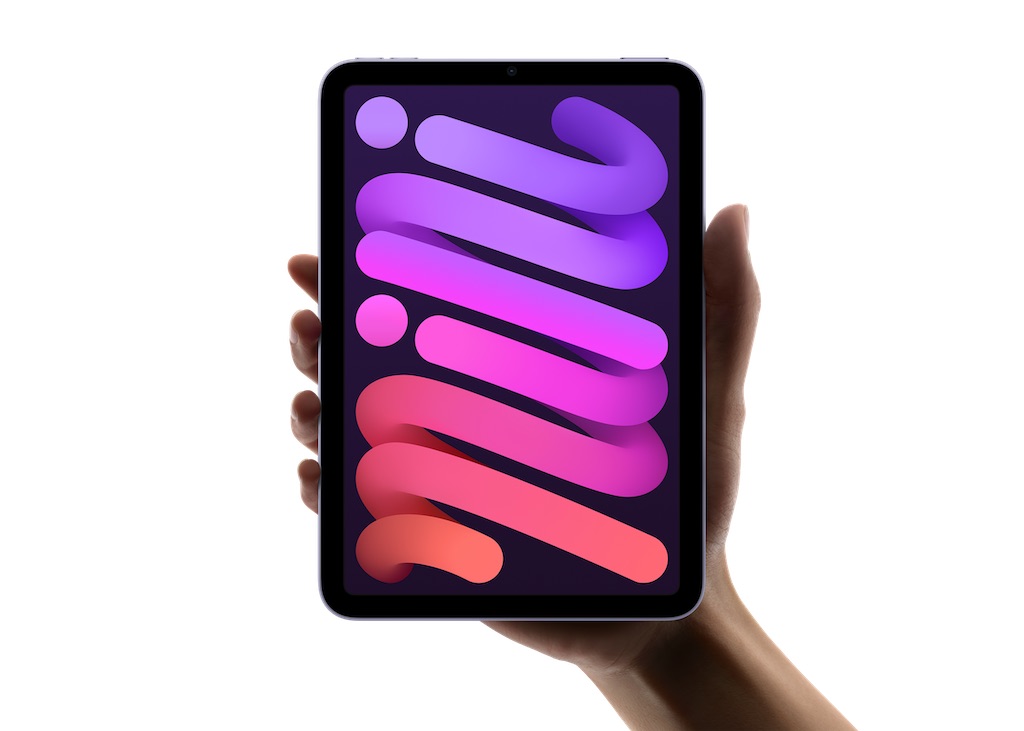
A new iPad mini
Apple gave its smallest tablet a little bit of a makeover. Gone is the traditional design with a home button and large bezels. Now, the device eschews the button and goes with a smaller frame to fit an 8.3-inch Liquid Retina. Touch ID now moves over to the power button at the top.
Apple also replaced the Lightning port with USB-C—something it did not do for the new iPhones. The right side is magnetic, allowing the Apple Pencil (2nd-Gen) to attach itself. That lets you interact with the tablet using the stylus, and then place it on the side when you’re done. The overall design also sports more obvious edges, plus a new front-facing camera that supports Center Stage, a feature that has the camera track you as you move in and out of the frame during video calls.
The tablet does run on the A15 Bionic chip, so it’s got some power under the hood. Both CPU and graphics performance should lead to big jumps, based on the company’s estimates. Apple rates battery life at up to nine hours for the Wi-Fi + Cellular model. It would be a little better for the Wi-Fi-only one.
Colour options include space grey, pink, purple and starlight. Storage capacity comes in either 64GB or 256GB.
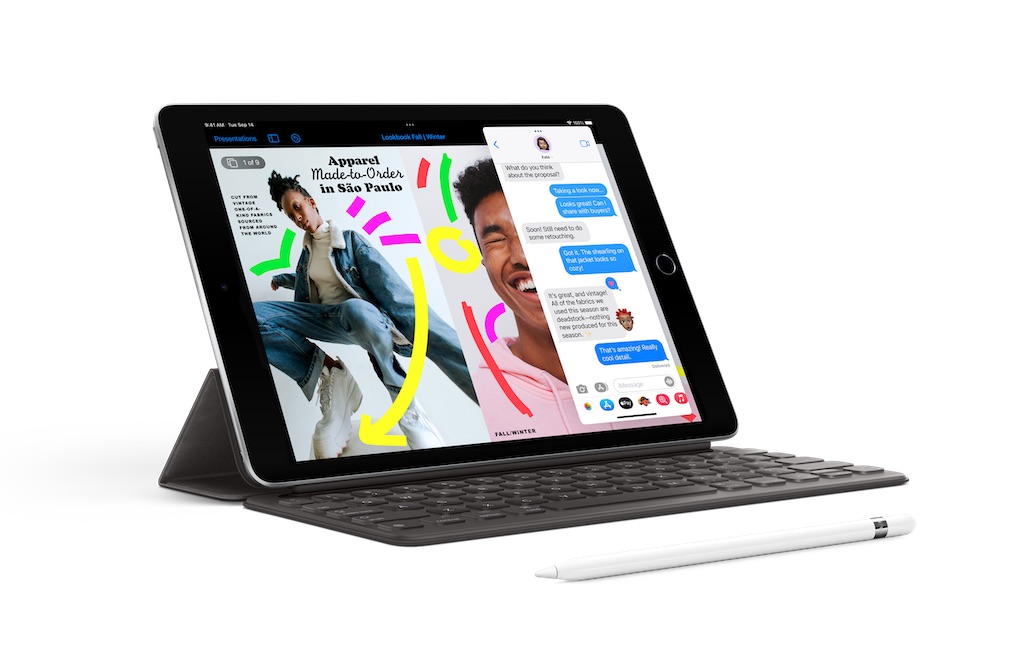
A new iPad 10.2
Apple also unveiled a new entry-level 10.2-inch iPad with modest upgrades. It will run on the A13 Bionic chip and include Center Stage in the front camera. Otherwise, it is effectively the same device. You can either get in space grey or silver in capacities of 64GB or 256GB.

Apple Watch Series 7
There is a new Apple Watch with the Series 7 that gets some iterative changes. It sports a slightly different design with more rounded corners and a more durable body. It features a more crack-resistant front crystal and IP6X protection, marking the first time one of Apple’s watches has actual dust resistance. The same WR50 waterproofing applies.
The newer display creeps closer to the edges, giving the screen almost 20% more space. You can now choose bigger fonts, and see more of a message when looking at it. Apps and settings will utilize the additional screen space to show more than before.
Exercise and fitness tracking pretty much stays the same, though Apple did add extras for cyclists. WatchOS 8 will also bring in its share of changes, including pilates and mindfulness practices for anyone looking to get into those. Battery life stays steady at up to 18 hours per charge.
The new Apple Watch will come in 41mm and 45mm sizes. Plus, there are five new aluminum colours: green, blue, midnight, starlight and productRed.
Coming soon
The Apple Watch will come later this fall, but you can get your hands on any of the other devices sooner than that. Pre-order the new iPhones starting September 17. They will be available to all starting on September 24. That also goes for the new iPads as well.
Check out the latest Apple products currently available here.

